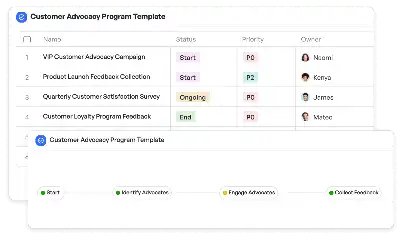Dynamic Difficulty Adjustment Model
Achieve project success with the Dynamic Difficulty Adjustment Model today!

What is Dynamic Difficulty Adjustment Model?
The Dynamic Difficulty Adjustment Model is a sophisticated framework designed to tailor game difficulty in real-time based on player performance and behavior. This model is particularly significant in the gaming industry, where maintaining player engagement is critical. By dynamically adjusting the challenge level, it ensures that players remain neither overwhelmed nor under-stimulated, creating a balanced and enjoyable gaming experience. The model leverages advanced algorithms and player data analytics to make real-time adjustments, making it a cornerstone for modern game design. For instance, in a role-playing game (RPG), the model can increase enemy strength if the player is performing exceptionally well or provide additional resources if the player is struggling, ensuring a seamless and engaging experience.
Try this template now
Who is this Dynamic Difficulty Adjustment Model Template for?
This template is ideal for game developers, designers, and product managers in the gaming industry. It is particularly beneficial for teams working on games that aim to cater to a diverse audience with varying skill levels. Typical roles that would find this template invaluable include AI developers, gameplay designers, and user experience researchers. For example, a gameplay designer can use this model to create adaptive challenges in a multiplayer shooter game, while an AI developer can implement algorithms that analyze player behavior to adjust game difficulty dynamically. This template is also suitable for indie developers looking to enhance player retention and engagement in their games.

Try this template now
Why use this Dynamic Difficulty Adjustment Model?
The Dynamic Difficulty Adjustment Model addresses several pain points in game development. One of the primary challenges is maintaining player engagement across different skill levels. Without a dynamic system, games risk alienating players who find the game either too easy or too hard. This model solves this issue by providing a tailored gaming experience. Another pain point is the difficulty in predicting player behavior during the design phase. The model uses real-time data to make adjustments, eliminating the need for extensive pre-launch testing. Additionally, it enhances player satisfaction by creating a sense of accomplishment and fairness, as the game adapts to their skill level. For example, in a racing game, the model can adjust the speed of AI opponents to match the player's performance, ensuring a competitive yet enjoyable experience.

Try this template now
Get Started with the Dynamic Difficulty Adjustment Model
Follow these simple steps to get started with Meegle templates:
1. Click 'Get this Free Template Now' to sign up for Meegle.
2. After signing up, you will be redirected to the Dynamic Difficulty Adjustment Model. Click 'Use this Template' to create a version of this template in your workspace.
3. Customize the workflow and fields of the template to suit your specific needs.
4. Start using the template and experience the full potential of Meegle!
Try this template now
Free forever for teams up to 20!
The world’s #1 visualized project management tool
Powered by the next gen visual workflow engine




